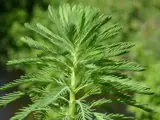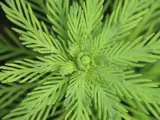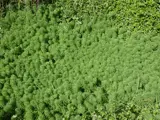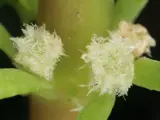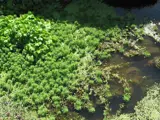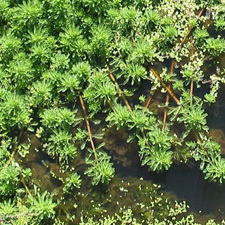 Parrot's feather
Parrot's feather
Common name: Parrot's feather
Botanical name: Myriophyllum aquaticum
Management programme: Advisory
Originally from South America introduced into New Zealand as part of the aquarium and pond plant trade. It was recorded as naturalised in 1970.
Why is it a pest?
- Forms dense mats, shading out existing native species and preventing new seedlings from establishing.
- Large clumps dislodge, causing flooding, and rotting vegetation stagnates water, killing fauna and flora.
Where is it found?
It is found in disturbed, polluted, high nutrient, well-lit or slow-moving waterbodies, as well as wetlands, water margins, streams, rivers, slightly saline estuary edges and river mouths.
What does it look like?
- Bottom-rooted, perennial floating and emergent plant with stolons, fibrous roots, and stems that grow to 2m long, emerging 10cm above water.
- Feather-like blue-green leaves are in whorls of five to six and are each divided into 25-30 leaflets.
- From September to February, minute female flowers are produced, but no seed is set in New Zealand.
What are the rules?
Advisory
Council does not enforce the control of advisory species. It is landowner/occupier responsibility to manage these pests. Council may provide advice on how to manage or control advisory species if required.
How do you get rid of it?
- Dig/rake-out (all year) leave on site to rot down away from water.
- Cover with Weedmat and leave for three to four months.
- Spray (spring to autumn).
CAUTION: When using herbicide please READ THE LABEL thoroughly to ensure that all instructions and safety requirements are followed.
Read more on pest control guidelines and regulations
Images

